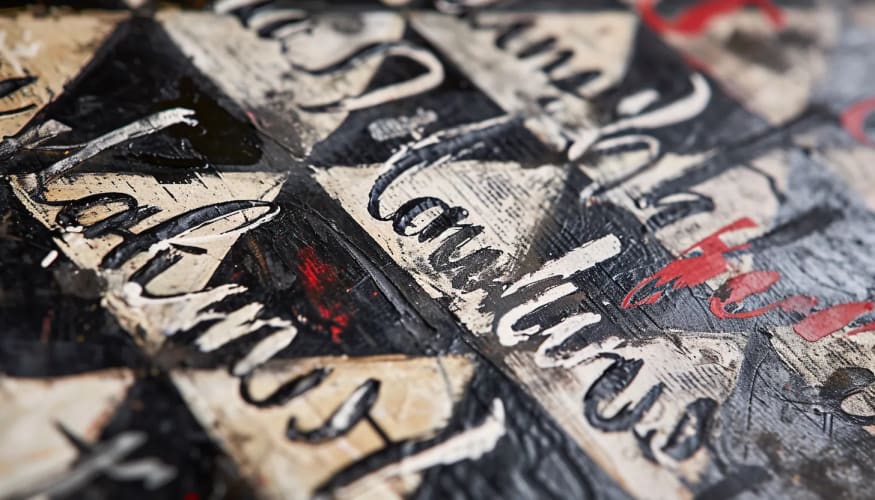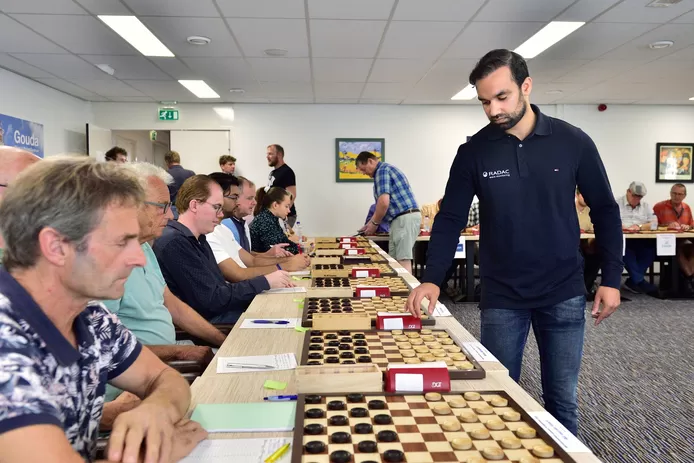These words are written just over a month after breaking the World Record Clock Simultaneous Exhibition. It still feels a bit surreal. The first question many attendees asked afterward was: why did it seem so easy? The fact that I survived the time-pressure phase without any trouble was unexpected. My immediate thought was: next time, there should be at least ten more boards!
To discuss what I consider the most beautiful game of the world record attempt, I’ll first take you through my preparation for the clock simul and how I ultimately decided to take on fifty boards. It all started over a year ago, in early 2022, when Jan Kok called me with a "fun idea." The Hague Open Foundation wanted to organize something in honor of my successful youth career. On the phone, Jan asked if I’d be interested in challenging the world record for clock simultaneous play, which at the time was held by Alexander Georgiev. In 2015, he set the record by playing 45 opponents with a win percentage of over 75%, where 70% was required. When Jan asked how many opponents I would like to face, I immediately replied: "Fifty!"
This impulsive response stemmed from my online experience during the pandemic, where I once played a simul against forty opponents with ease. Many people quickly advised against my choice, arguing that the record limit might be just above fifty, meaning the event could only be organized a few more times. However, I still firmly believe the true limit lies somewhere between sixty and seventy boards, and I'd love to challenge top players to push the record to those numbers!
In my preparation, I received tremendous support from both the organizing team of The Hague Open Foundation and from Koos van Amerongen. Koos organized a practice simul in IJsselstein against thirty players. It was a close call—two opponents kindly offered me draws when I only had a few seconds left on the clock. The main issue was my inability to secure quick victories, which often put me in time trouble. During the second practice simul in Gouda against 28 players, I decided to adopt a more aggressive playing style. This resulted in a score of over 85%, without any time-pressure issues. After this simul, I was confident that the world record attempt was achievable.
Before sharing how I experienced the record-breaking day itself, I must confess something. Here’s what I envisioned beforehand: I’d arrive in Gouda, give a short speech to wish everyone good luck, acknowledging how awesome it was that my opponents came from all over the country for this attempt. Then, once the clocks started, I'd sprint through the room and do my thing. It all sounded relaxed in my head. I'm usually not easily fazed, even during regular games. I always think: this is what I've trained for, and this is what I'm good at. What could go wrong?
But that morning, for the first time in a long while, I felt nervous! All of a sudden, my heart started beating faster for a game of draughts! What's happening? I thought. Walking into the room, I realized the number of boards had nearly doubled compared to the second practice simul. Despite this, the nerves were oddly reassuring. They kept me sharp and gave me extra motivation to break the record. Once the clocks started, I found my rhythm. From that moment, everything-perhaps not effortlessly-went as I had envisioned.
In this analysis, I'd like to guide you through the most fascinating game of the world record attempt. Both technically and tactically, it features numerous remarkable moments. Moreover, over the years, I've developed an unshakable love for the Keller variation, especially when playing as the surrounding side. Throughout this analysis, it will become increasingly clear why.

